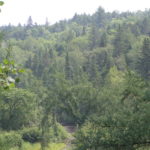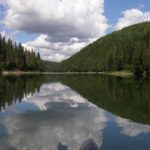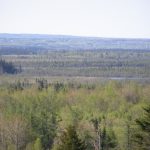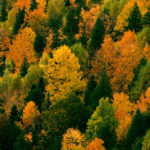The Forests of New Brunswick
Almost 82% of New Brunswick is forested, with much of that being on Crown land. It has held a significant place in the economy of our province from the beginning, but more importantly it has played a significant role in our daily lives. The forests provide us with clean air and clean water. It provides habitat for a wide variety of species. It provides a place for us to walk, hike, camp, and simply get away from the noise. And in the days to come, it will provide us with a buffer from some of the impacts of climate change.
It is more important than ever that we take steps to conserve New Brunswick’s forests.
Through its involvement with Two Countries One Forest, CPAWS NB is working on the Future Forests Reimagined initiative. This is a transboundary initiative to protect and restore forests in the Northern Appalachian-Acadian-Wabanaki (NAPAW) ecoregion of Canada and the United States, of which New Brunswick is a part.
The 3 main strategies are:
1) Identify and Protect Remaining Old Forests
2) Accelerate the Restoration of Forests
3) Increase the Amount of Actively Managed Resilient Forests
A recent 5-day workshop brought together key stakeholders and Rights holders from Indigenous groups, Canada, and the U.S. to develop a shared plan for advancing the protection and stewardship of forests across the NAPAW ecoregion.
A full report of the Future Forests Reimagined Workshop Series is now available.
In this section
A Canadian Heritage River, the Restigouche River system is one of Eastern Canada’s most spectacular wild watersheds. Its 1 million hectares of valleys, hills, and streams flow across northwestern New Brunswick and Quebec’s Gaspé.
The Chignecto Isthmus, connecting the provinces of New Brunswick and Nova Scotia, is a vital piece of land which requires special conservation measures.
Forests have long played a role in the economy and life of New Brunswick. As a result of climate change, however, we may see some big changes here.

Help protect New Brunswick’s forests!
New Brunswick currently protects around 10% of our forests from development and industrial activity. That is way below the bare minimum needed to conserve our wildlife and wilderness values for the future. New Brunswick is second to last of all provinces in Canada in the proportion of land we’ve protected. It’s nowhere near enough!



